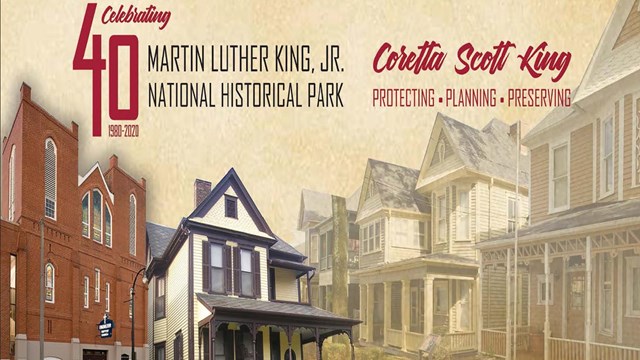
Designed by Donald Bermudez On June 26, 1968, Mrs. King founded The Martin Luther King Jr. Memorial Center to serve as “The Official Living Memorial" to the life, work and legacy of her husband. Eventually the name changed to Martin Luther King, Jr. Center for Nonviolent Social Change, Inc., and today commonly referred to as The King Center. Mrs. Coretta Scott King served as the Center’s first president and is entombed on the Reflecting Pool, right beside her husband, Rev. Dr. Martin Luther King, Jr. on The King Center campus. Take the journey to learn more.....
Establishing the Historic Site
The moment President Carter signed Public Law 96-428 creating the Martin Luther King, Jr. National Historic Site. 
Seeking Justice, Liberation and Peace
Mrs. King's vision focused on the construction and development of The King Center campus and the development of the 23-acre neighborhood. 
Work on Historic Structures Begins
The National Historic Preservation Act of 1966 gave the National Park Service the responsibility and authority to restore and preserve. 
The Women of Influence
Dr. King’s childhood experiences laid the foundation for his answering the call to leadership. 
The Vine City Community
African Americans migrated to Atlanta’s westside in the Vine City community known for its notable residents linked to the CR Movement. 
Preaching Social Change
Dr. King used the church as a meeting place to plan strategies and tactics for nonviolent civil rights protests. 
Protecting the Cultural Resources
The community where Dr. King was born and lived the first 12 years of his life is often the highlight of ones visit to the park. 
The Journey to Community Pillars
Dr. King was engaged with his community at various times during his life. These periods of engagement ware captured at the Visitor Center. 
A Place of Reflection
The crypt of Dr. and Mrs. King on the grounds of The King Center. |
Last updated: April 30, 2021
